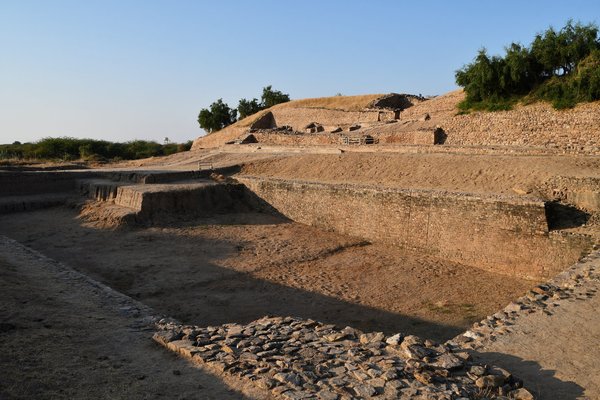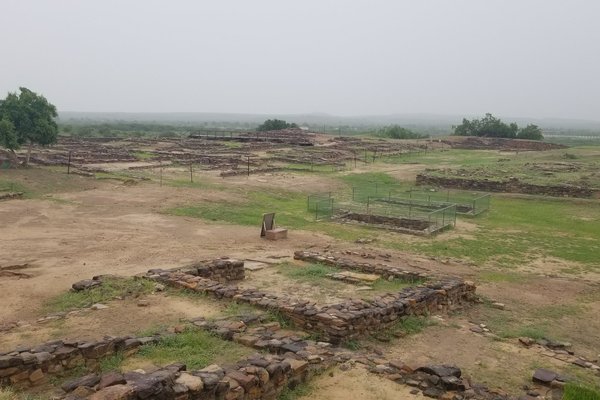India
Dholavira: A Harappan City
Dholavira: a Harappan city is an archaeological site that contains ruins of a large urban settlement of the Indus Valley Civilization.
The fortified city flourished between 3000 and 1800 BCE. It had an efficient water conservation system. The city was constructed to a pre-existing geometrical plan consisting of three divisions – the citadel, the middle town, and the lower town. The site also includes a cemetery to the west of the city.
Community Perspective: Randi, Svein and Philipp were the first to get there and review it. They were impressed by the very large water reservoir. The site doesn’t see many visitors, the entrance is free and signposting is a bit erratic. The area overall is a “NO zone”.
Site Info
Official Information
- Full Name
- Dholavira: A Harappan City (ID: 1645)
- Country
- India
- Status
-
Inscribed 2021
Site history
History of Dholavira: A Harappan City
- 2021: Inscribed
- Inscribed
- 2014: Revision
- Revised nomination of Dholavira: a Harappan City, Gujarat, Disstt, Kachchh (1998)
- Type
- Cultural
- Criteria
- iii
- iv
Links
- UNESCO
- whc.unesco.org
- Official
-
- gujarattourism.com — Gujarat Tourism website
All Links
UNESCO.org
- whc.unesco.org — whc.unesco.org/
Official Website
- gujarattourism.com — Gujarat Tourism website
Community Information
- Community Category
- Archaeological site: South (East) Asian
Travel Information
Most Remote Cultural WHS
Free entrance
(last update 2025)
Recent Connections
-
Most Remote Cultural WHS
hub Bhuj, about 4h by car -
Free entrance
(last update 2025)
-
Recorded cultural discoveries
"The site was discovered by Dr. Jagat P…
Connections of Dholavira: A Harappan City
- History
-
-
Bronze Age
"Dholavira is an exceptional example of a proto-historic Bronze Age urban settlement pertaining to the Harappan Civilization". (Official description) -
Oldest Buildings
The Castle of Dholavira, part of the Citadel, has proof of habitation that dates back to Stage I of the city, "around the beginning of third millennium BCE". (Nomination text, p. 58) In "Stage III (c. 2800-2500 BCE) (...), [t]he walled settlement was further reinforced and transformed into the Castle. The Bailey was added to it from the west." (AB Ev) -
Indus Valley Civilisation
the southern centre of the Harappan Civilization (official description)
-
- Architecture
-
-
Rock Cut Architecture
Of a series of five buried water reservoirs, the "third one which is centrally located is primarily a rock-cut architecture of excellence, exquisite beauty and superb skill." (Nomination text, p. 121) -
Brick architecture
The defensive walls of Dholavira built in Stages II and III were made of brick masonry. (Nomination text, p. 51, 70)
-
- Damaged
-
-
Destroyed or damaged by Earthquake
Dholavira was several times devastated by an earthquake, for instance in Stages IIIA and V of its existence. The earthquake at the end of Stage V, caused the site "to be abandoned for a short period of time." An earthquake in 2001 caused minor damage to the archaeological site. (AB Ev; Nomination text, p. 53, 71, 399)
-
- World Heritage Process
-
-
Perfect Inscriptions
2021
-
- Human Activity
-
-
Locations for playing sport
"The rectangular Ceremonial Ground is a relatively flat area originally annexed to the Castle as a residential area, but later cleared for carving out the open space." (AB Ev) It comprises "two multi-purpose grounds as integral elements of urban planning" that "strongly appear to have been used as stadiums as well as seasonal trading areas in addition to miscellaneous social and other activities". "The presence of a large ceremonial ground that could have been used for multipurpose activities like holding recreation activities, markets, local gatherings, sport activities, is another extraordinary example at Dholavira." (Nomination text, p. 93, 356) -
Writing systems
Indus Valley scriptSee www.harappa.com
-
Irrigation and drainage
Water management system and hydraulic engineering that contains at least 16 reservoirs and an elaborate systems of drains and sewers -
Stone Quarries
A sandstone quarry from where sandstone was excavated, converted into huge architectural members and even exported to sites such as Harappa and Mohenjo-daro, several hundred kilometres away -
Erotic art
In India, the earliest such surviving imagery dates from the Harappan times, such as the phallic statues of Dholavira. - “A soft sandstone sculpture of a male with phallus erectus but head and feet below ankle truncated was found in the passageway of the eastern gate.” (it’s unclear whether phallic sculptures still can be seen on site today)See www.himalmag.com
-
Copper production
"(...) the location of Dholavira in the island of Khadir was strategic to harness different mineral and raw material sources (copper, (...) among others)" (Official description) "The evidence of copper metallurgy from the earliest stages at Dholavira clearly indicate[s] the smelting of copper ore. The nearest copper sources from Dholavira is the Ambaji-Deri copper mines located on the Gujarat - Rajasthan border. A variety of copper artefacts clearly demonstrate[s] the wide preference of finished products, both for the elite and lay persons." (Nomination text, p. 188)
-
- Constructions
-
-
Tumuli
"Six hemispherical tumuli are the most conspicuous features of curiosity and promise in the zone of [the] western necropolis." They surround a "depression representing a buried water body and were believed to be of special significance in terms of their shape, size and location. Two of them (...) have been subjected to archaeological investigation which confirmed their being funerary monuments of exceeding importance and unique character". (Nomination text, p. 223) -
Cemeteries
The archaeological remains of the city of Dholavira include fortifications, gateways, water reservoirs, ceremonial ground, residential units, workshop areas, and cemetery complex (AB ev) -
Stepwells
Bead-workshop, water tanks, a step well, and houses of various stages are found in the Castle (AB ev) -
Granaries
and in the southeast part is located a large granary (AB ev) -
Cenotaph
The site includes a large cemetery with cenotaphs of six types testifying to the Harappan’s unique view of death. (official description) -
Pillars
The "in situ preserved stone elements, consisting of a series of arrangement of square, bi-concave and bi-convex pillar elements, fastened to each other through a mortice and tenon arrangement, have helped in the understanding of architectural edifices and their basic elements." "The production of limestone pillar elements is unmatched among the other contemporary settlements." "The pillar elements were also exported to other Harappan cities like Mohenjo-daro and Harappa, from where evidences clearly indicate the interregional trade and the demand for such items of trade, most probably for elite use." (Nomination text, p. 167, 170-171, 353)
-
- Timeline
-
-
Built in the 3rd Millennium BC
dating from the 3rd to mid-2nd millennium BCE (AB ev)
-
- Science and Technology
-
-
Recorded cultural discoveries
"The site was discovered by Dr. Jagat Pati Joshi, former Director General of ASI, in 1968, during his exploration in the Kachchh district." (Nomination text, p. 37)
-
- Visiting conditions
-
-
Most Remote Cultural WHS
hub Bhuj, about 4h by car -
Free entrance
(last update 2025)
-
News
No news.
Recent Visitors
- Priyaranjan Mohapatra
- Kurt Lauer
- Loic Pedras
- Luis Filipe Gaspar
- Roman Bruehwiler
- marcel staron
- Zoë Sheng
Visitors of Dholavira: A Harappan City
Community Reviews
Show full reviews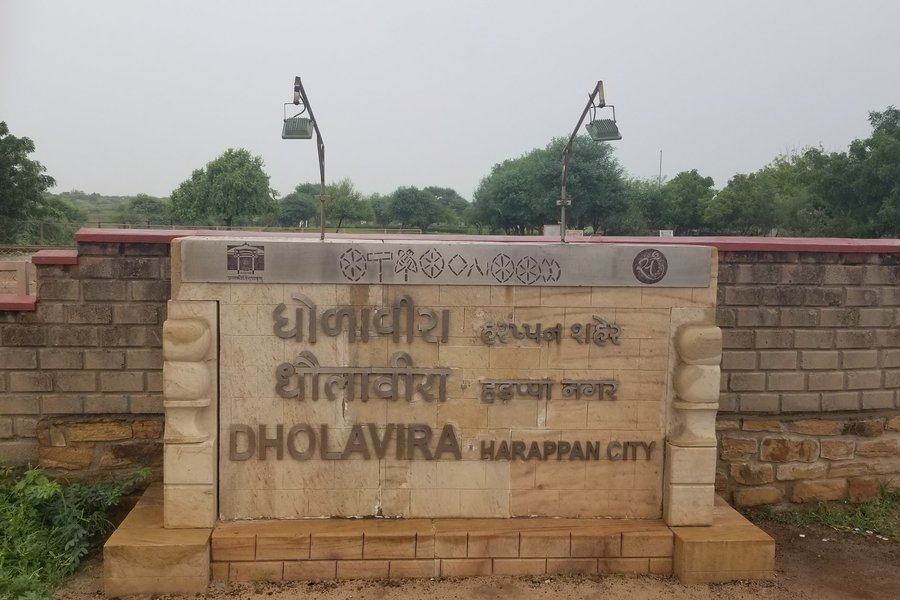
It's good this site was added to the UNESCO list, not only because it's a great inscription but also because it made it worth taking a tour into the area again. I added Rani-ki-vav, the sun temple and the other Harappan site to make it an easy 2 day trip. The smaller Harappan sites should be included in this inscription and I think an extension would be required so if you don't want to go all the way south for that I would understand and skipping it is totally ok. There are several of these kind of sites including over in Pakistan so it's probably not gonna be extended anytime soon.
Because I had more sites to add it was worth doing a trip from Ahmedabad which requires staying on Khadir Bet island or maybe somewhere nearby. It takes a good 7h from Ahmedabad to get here thus it's probably the best. There is also a closer airport at Bhuj which only takes 4 hours so if that is your only site to visit then I would attempt that way - there are flights from Mumbai, however it's a military airport and getting close to Pakistan already raises attention for flying to Ahmedabad. Nothing you can do and being honest about your wishes to see the area as a tourist still gets a funny look from immigration. As if I were to do anything naughty...
There are a several places to stay on the island (with roads by the way …
Keep reading 0 comments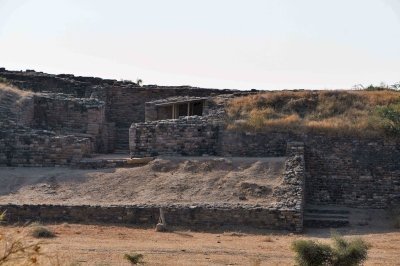
This is a new site and has very few visitors from our community so far. Dholavira is an old Harappan city dating back to 3000 years BC, so we didn’t expect to see much. But we were surprised!
We, that includes Svein and Phillip, were first on site this December morning and we even had to open the gate. The first structure was a very large reservoir in front of the castle’s eastern gate, impressive! It seems like the ancient civilization living here did very well in mastering the water.
The settlement was at the beginning a small, fortified village, and was at its heights around 2600 BC. The city has a long history of rise and fall over 1500 years. Then it was abandoned and never occupied thereafter. They built monumental structures and amazing water management and storage systems.
The site consisted of four distinct areas, the Castle complex, Bailey, the Stadium area, and the Middle and Lower town. There are some fine examples of gates (the north and east) to the castle area. The most interesting places was signposted, but they still have some work to do! We nearly missed the Middle town and had to go back to find it, after having studied the map at the museum. This small museum was at the gate, and it had some artifacts, pictures and information leaflets. It was closed when we arrived, apparently opened at 9:00.
We spend almost three hours at the site, the …
Keep reading 0 comments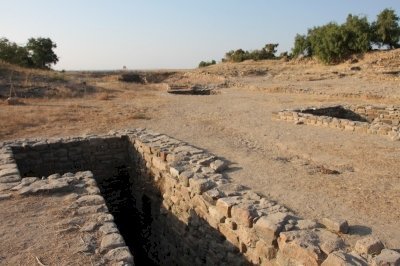
Visit December 2022 – I planned this visit together with Randi and Svein. As Randi described the site very well in her review, I will focus on the logistics.
How to get there
We arrived in Ahmadabad with an early morning flight from BOM. Svein hat prebooked a rental car with Europcar that should have been brought to us at the arrival. As nothing really works as planned in India, we finally took off with a car with driver and around 2.5h delay. The driver took us via Modhera TWHS and Rani Ki Vav WHS to Dholavira. It’s a more than 6h drive from Rani Ki Vav. After spending the night in Dholavira, we visited the site in the morning (around 8am to 11am) and spent the rest of the day driving back to Ahmadabad. The drive takes over 8h, plus lunch and coffee breaks.
Where to stay
We stayed at the Hotel Rann of Kutch. Location is great. Around 10min walk from the entrance. Look for Dholavira Tourism Resort when you arrive. As a room we had our own traditional hut with 3 beds. The room was very basic, had no Wifi and only accepted cash. Booking was a hassle, as they demand a bank transfer to secure the booking. We did not do that (transaction fees would be too high) and the first booking got cancelled. The room was completely overpriced. But there are few other options so close to the site. Bring enough …
Keep reading 0 comments
